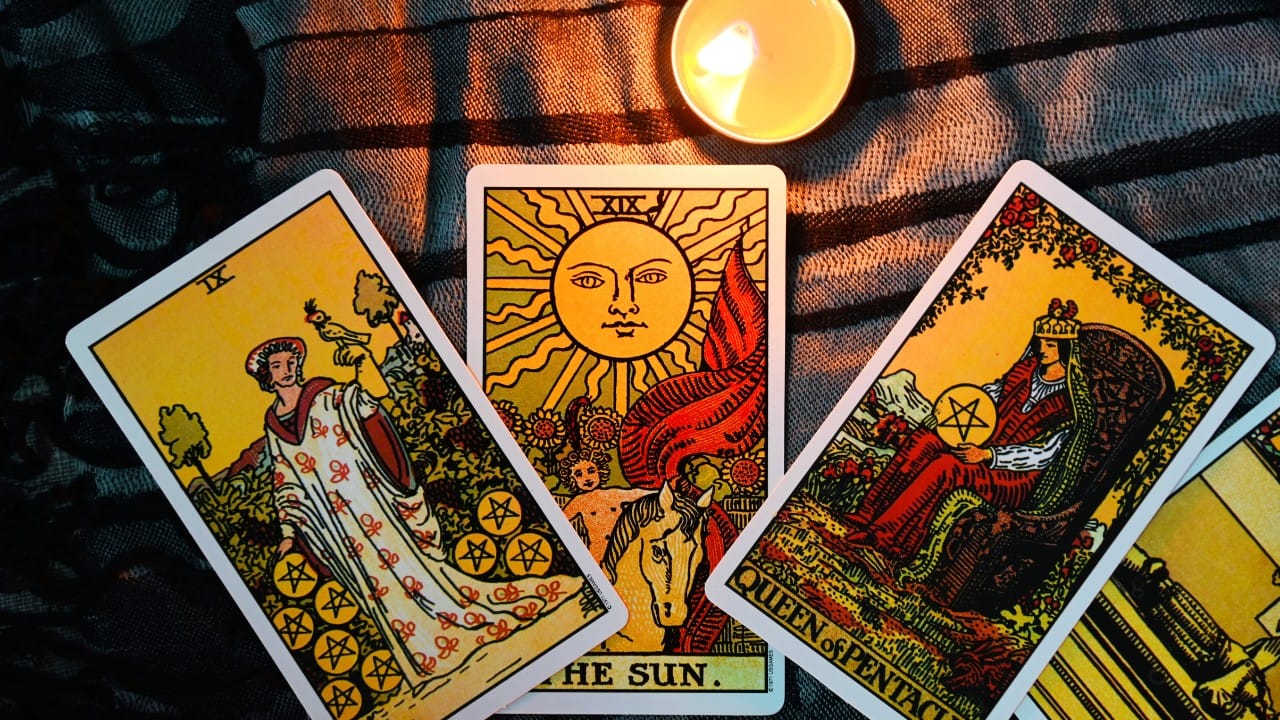How to Connect with Your Intuition While Reading Tarot

When reading tarot, many people focus solely on memorizing card meanings. But the real magic of tarot lies in your intuition—that inner voice that provides personal insight and guidance. Connecting with your intuition allows you to interpret the cards in a way that resonates deeply with your current situation, offering clarity and wisdom beyond textbook definitions.
In this article, I’ll guide you through practical techniques to strengthen your intuitive connection, helping you trust your inner guidance and create meaningful tarot readings.
What is Intuition, and Why is It Important in Tarot?
Intuition is your ability to understand or sense something without relying on conscious reasoning. It’s often described as a “gut feeling” or inner knowing. When reading tarot, intuition helps you:
- Personalize your interpretations based on the specific question or situation.
- Recognize symbols, patterns, and feelings that aren’t immediately obvious.
- Trust yourself to provide meaningful insights, even when the cards feel confusing.
While learning traditional card meanings is important, intuition allows you to move beyond rigid interpretations and tune into the unique message each reading holds for you or your querent.
How to Develop and Trust Your Intuition
If you feel disconnected from your intuition, don’t worry—it’s a skill that can be nurtured with practice. Here are steps to help you build a stronger intuitive connection during tarot readings.
1. Create a Calm, Focused Space
To hear your intuition clearly, you need a calm mind. Distractions and mental clutter can block intuitive messages.
How to do it:
- Find a quiet space where you won’t be interrupted.
- Light a candle, burn incense, or play soft music if it helps you relax.
- Take a few deep breaths to center yourself before shuffling the cards.
Example: If you’ve had a stressful day, spend five minutes in silence, breathing deeply to release tension before beginning your reading.
2. Set a Clear Intention
Before starting a reading, set an intention for what you want to gain from the session. This helps focus your energy and invites your intuition to guide you.
How to do it:
- Ask yourself, “What do I need to know right now?”
- You can also say a brief affirmation, such as, “I trust my intuition to guide me through this reading.”
Example: If you’re seeking career guidance, your intention might be, “Help me understand the next best step for my professional growth.”
3. Focus on the Imagery and Symbols
Each tarot card is rich with symbols that can spark intuitive insights. Pay attention to which parts of the imagery catch your attention.
How to do it:
- Look at the card without overthinking. Notice what draws your eye first—colors, symbols, or characters.
- Ask yourself, “What does this symbol mean to me?”
Example: In The Star card, you might be drawn to the water being poured. This could intuitively represent emotional healing or a need to “go with the flow” in your life.
4. Notice Your First Reaction
Your first impression of a card is often your intuition speaking. Even if it doesn’t match the traditional meaning, trust your initial feeling.
How to do it:
- Before analyzing the card, ask yourself, “What do I feel or sense when I see this card?”
- Write down your immediate thoughts or emotions, even if they seem unrelated to the question.
Example: You draw the Nine of Swords, and your first reaction is a feeling of exhaustion. This may indicate that you’re overwhelmed by your thoughts and need rest.
5. Use Your Senses
Your intuition may communicate through different senses, such as visual images, emotions, or even physical sensations.
How to do it:
- Pay attention to any images that pop into your mind while reading the cards.
- Notice if you feel physical sensations, such as warmth, tension, or calmness.
Example: While reading the Three of Pentacles, you might suddenly imagine a group of people brainstorming. This could intuitively suggest that collaboration is key to your success.
6. Practice Free Association
Free association helps you unlock personal connections to the cards by allowing your mind to wander naturally.
How to do it:
- Look at the card and say the first word, phrase, or memory that comes to mind.
- Explore how this association might relate to your question or situation.
Example: You draw the Six of Cups and immediately think of childhood. This could indicate that reconnecting with your inner child or past experiences is important right now.
7. Ask Follow-Up Questions
If a card feels unclear, ask your intuition for more information by drawing additional cards. Trust that the deck will provide further clarity.
How to do it:
- Pull a clarifying card and ask, “What do I need to understand about this situation?”
- Reflect on how the second card enhances or shifts the message of the first card.
Example: You draw The Moon and feel uncertain about its message. You pull The Hermit as a clarifying card, suggesting that introspection and seeking inner wisdom will help you find clarity.
8. Keep a Tarot Journal
Documenting your readings helps you notice patterns and strengthen your intuitive abilities over time.
How to do it:
- After each reading, write down the cards you drew, your initial impressions, and any intuitive insights you received.
- Review your journal regularly to track how your intuition has guided you in past situations.
Example: You might realize that you often draw The Chariot before major life changes, reinforcing its personal meaning as a symbol of determination and progress.
9. Trust Your Intuition, Even When It’s Unexpected
Sometimes, your intuition may provide messages that seem unrelated to your question. Trust that these insights have value, even if they don’t make immediate sense.
How to do it:
- Avoid second-guessing yourself. Remember that intuition can feel subtle or unexpected.
- Be open to how the message might unfold over time.
Example: During a reading about your career, you sense a strong focus on relationships. Later, you realize that networking and building connections are essential to your next opportunity.
10. Meditate Regularly to Strengthen Intuition
Regular meditation helps you develop mental clarity and emotional balance, making it easier to hear your inner guidance during tarot readings.
How to do it:
- Set aside 5–10 minutes a day for quiet meditation or mindfulness.
- Focus on your breath, allowing thoughts to come and go without judgment.
Example: You might visualize yourself shuffling your tarot deck and receiving clear, intuitive guidance during your meditation.
Common Challenges and How to Overcome Them
If you feel blocked or disconnected from your intuition, here are some solutions:
- Overthinking: Focus on the imagery instead of analyzing meanings.
- Fear of being wrong: Remind yourself that tarot is about exploration, not perfection.
- Lack of trust: Start with small, low-stakes questions to build confidence in your intuition.
Tarot is a deeply personal and intuitive practice. By creating space for your inner voice and trusting your instincts, you can unlock powerful insights that go beyond surface-level interpretations. Over time, you’ll learn to rely on your intuition as a trusted guide in both tarot readings and life decisions.
So, the next time you sit down with your tarot deck, take a deep breath, trust yourself, and let your intuition lead the way.
How do you connect with your intuition during tarot readings? Let your inner voice speak, and see what messages the cards reveal!




